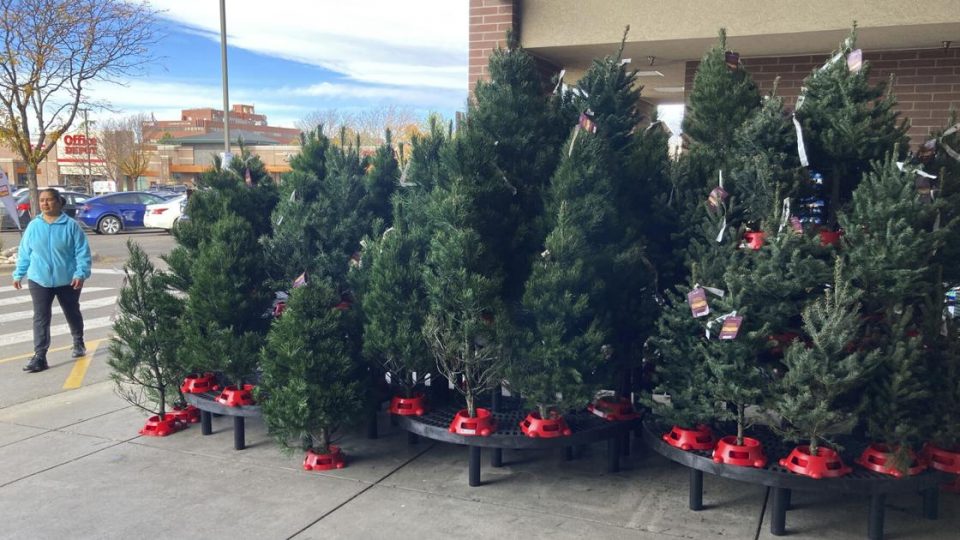Many people are looking past Thanksgiving to Christmas as they brace for a holiday shopping season marked by higher prices and limited options.
And this year, that includes Christmas trees.
Growers and sellers are boosting prices as they encourage people to shop early for Christmas trees, warning that some varieties might be hard to find. Meanwhile, artificial tree prices are expected to increase due to the same supply chain problems, staffing issues and energy price shortages that has led to inflating costs for many consumer goods.
“There’s going to be enough trees out there for everyone, but they might not get their first choice,” said Randy Hunt, whose family owns Hunt’s Christmas Trees at 465 Stehman Road in Manor Township.
Hunt said he expects to sell some 1,100 trees this year, including 300 bought to supplement ones grown on the farm. While higher labor costs have pushed up prices for the farm’s own trees, some of the biggest increases are for trees purchased from wholesalers in central and northern Pennsylvania.
“The larger ones were very difficult to find and when we did find them, they were quite a bit more expensive,” he said.
This year, for example, an 8-to-10-foot Fraser fir — one of the most popular varieties — costs $200, up from $132.85 last year. A 6-to-8-foot Fraser fir costs $100 this year, up from $80.85 last year. Other 6-to-8-foot trees cost $70.
Long-term trends, short-term spikes
Since they can take up to 10 years to reach maturity, this year’s supply of Christmas trees is based on planning decisions made a decade ago. Back then fewer trees were being planted because growers were still recovering from the Great Recession of 2008-09, said Doug Hundley, a spokesperson for the National Christmas Tree Association, which represents growers.
That longer-term trend explains most of this year’s price jumps, which Hundley said have generally been between 5% and 10%, and follow decades of lower prices amid abundant supplies.
“Finally, we don’t have an oversupply of trees, so prices have gone up significantly for both wholesale and retail,” said Hundley, who grows trees in North Carolina.
A shorter-term increase in demand is expected to carry over from last year, when the National Christmas Tree Association said people cooped up during the pandemic increasingly wanted to create a traditional Christmas experience with a real tree.
Plus, an overall increase in business costs amid supply chain disruptions have made things generally more expensive, although that has been a bigger issue for some sellers of artificial Christmas trees, who get products from China.
Earlier in the fall, some sellers of artificial trees were warning of cost hikes of 20% as increased shipping fees were driving up prices and shrinking supplies, according to the American Christmas Tree Association, a nonprofit organization that promotes live and artificial trees.
Last year, the American Christmas Tree Association estimated that 75% of U.S. households, or nearly 94 million, displayed a Christmas tree in their home. Eighty-five percent of those trees were artificial, and 15 percent were real, according to the results of its annual Christmas tree survey.
Shalaeya Brown, a spokesperson for Lowe’s, which sells artificial trees, declined to comment on any prices increases but told LNP | LancasterOnline the retailer ordered inventory earlier than in year’s past and has its “largest selection ever.”
But she added: “There isn’t an endless supply of holiday products, so we encourage consumers to shop early so they have the widest selection of options on the timeline they need and at the price they want.”
‘We sell an experience’
Lancaster County is home to roughly a dozen farms that sell pre-cut trees or offer a choose-and-cut option. Live trees are also sold at some big-box stores as well as from temporary set-ups in some parking lots.
Like Hunt’s Christmas Trees in Manor Township, many local growers supplement trees from their own fields with trees bought from wholesalers. And since wholesale trees have been more expensive this year, they tend to boost prices for a farm’s own trees, Hundley said.
“It’s natural they’re going to price all their trees the same,” he said.
Susan Miller, an owner of Miller’s Tree Farm at 470 Trail Road N. in Mount Joy Township, said she expects to bring in about a quarter of the trees they’ll sell this year, saying that in addition to being more expensive, wholesale trees were harder to find this year because some farms went out of business, or are keeping all their trees for themselves.
“There’s been a shortage, actually, and everyone is trying to reestablish their farms,” Miller said, explaining that more expensive wholesale trees as well as increases in fertilizer and labor costs prompted them to boost their tree prices for this year.
Miller’s, which prices trees by the foot, raised costs by $1 since 2020, which has it selling Douglas firs for $11.50 per foot and Frasier firs for $13.50 per foot.
Deb Weaver, an owner of Heritage Tree Farm at 142 Church Road in Warwick Township, said they stopped selling wholesale a couple years ago but were inundated this year with calls from retailers looking for trees, especially ones near big cities.
“Everyone was telling us, ‘If you want to make money before you open, just wholesale your trees,’” she said, explaining that wholesale prices nearly equaled what they are charging retail customers who come to the farm.
But Weaver, who declined to publicize her prices, said the farm’s business model isn’t about just selling out, but rather catering to customers for whom securing a tree is part of the holiday tradition.
“We sell an experience … We don’t want someone just coming for a cheaper price,” she said.


